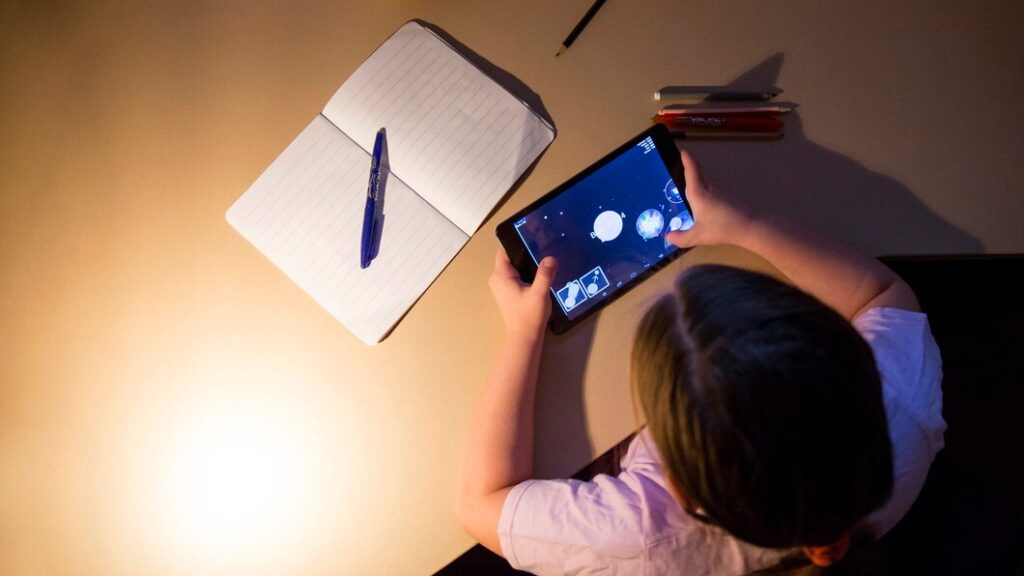
It is the central paradox of modern parenting: the very screen you wish your child would put down might just be the most effective tool for getting them to do so. In a world saturated with digital distractions, the battle over screen time has become an exhausting, daily reality for families everywhere. We worry about the sheer quantity of time our children spend staring at glowing rectangles, concerned about the impact on their focus, creativity, and connection to the world around them. However, what would happen if we altered our priority from sheer volume to inherent value? The solution to excessive screen time may not be a complete ban, but a strategic and mindful approach that leverages the best of technology to fight the worst of it. This is where a unique and powerful category of educational apps for minimal screen time comes into play. These apps are designed not to capture attention, but to inspire action, acting as a bridge from the digital world back to the physical one.
This in-depth guide will walk you through the philosophy of using technology to reduce technology use. We will explore how to identify these beneficial apps, what categories to look for, and how to integrate them into your family’s routine to help your child build a healthier, more balanced relationship with their digital devices.

The Philosophy: Quality Over Quantity in the Digital Age
To begin this journey, a profound change in perspective is the essential first step. For years, the conversation around kids and screens has been dominated by a single metric: time. We establish time restrictions and actively enforce them, yet frequently experience feelings of guilt whenever those boundaries are crossed.
While time is a factor, it doesn’t tell the whole story. An hour spent passively watching algorithm-driven short-form videos has a vastly different neurological and developmental impact than an hour spent using an app to learn a new skill that is then practiced offline.
This is the critical difference between passive consumption and active engagement. Passive consumption, the hallmark of most entertainment and social media apps, is designed to keep the user in a state of low-effort, high-reward engagement for as long as possible. It’s the endless scroll, the auto-playing next episode—a digital experience designed to be a destination in itself.
Active engagement apps, particularly the best educational apps for minimal screen time, operate on a completely different principle. Their goal is not to be the destination, but to be the launchpad. They embrace what can be called the “Bridge Concept.” These apps are designed to act as a bridge from a digital prompt to a real-world activity.
They provide the idea, the instructions, or the inspiration, but the core experience—the learning, the creating, the playing—happens entirely offline. The success of these apps is measured not by how long they keep a child engaged on the screen, but by how quickly and effectively they can inspire them to put the screen down and engage with the world around them.

A Parent’s Guide: Identifying the Best Educational Apps for Minimal Screen Time
The app store is a crowded and often confusing place. To find the true gems that promote less screen time, you need to become a discerning consumer. Here is a checklist of criteria to use when evaluating any new app for your child.
- Does It Have a Clear “Off-Ramp”? This is the most important question. A true minimal screen time app is designed with a built-in exit strategy. Its primary purpose should be to get your child to do something away from the device. Does the app culminate in a prompt to go outside, build a physical object, conduct a science experiment, or practice a real-world skill? If the entire experience is self-contained within the screen, it is not a minimal screen time app.
- Is the Core Loop Finite and Project-Based? Many of the most addictive apps and games are built on “infinite loops.” There is always another level, another video, another post. This design keeps users hooked. In contrast, high-quality educational apps are often project-based and have a finite loop. A child uses the app to complete a specific project—coding a robot to complete a maze, following a recipe, finishing a drawing tutorial—and once the project is done, the core task is complete. There is a natural and satisfying stopping point.
- Does It Promote Real-World, Transferable Skills? Look for apps that teach skills that are primarily used and valued in the physical world. An app that teaches your child the basics of coding is good, but an app that teaches them to code a physical robot that they can build and play with is even better. An app that shows them videos of famous paintings is interesting, but one that gives them a daily drawing prompt to complete in their own physical sketchbook is more aligned with the minimal screen time philosophy.
- Is It Free From Manipulative Design? Be wary of apps that use the “freemium” model or are filled with addictive mechanics. These can include:
- Constant Notifications: Alerts designed to pull your child back into the app.
- Unpredictable incentive systems, such as daily check-in rewards and in-game money, are designed to foster the habit of compulsive checking.
- Social Pressure: Features that create a sense of obligation to other online players.
Often, high-quality educational apps that require a one-time upfront payment are a better investment, as their business model is not dependent on keeping your child hooked for as long as possible.
5 types of applications that actively promote a reduction in screen time
Using the criteria above, you can find excellent apps across several categories. Here are five types of educational apps for minimal screen time that exemplify this philosophy.
- Nature and Exploration Apps These apps use the powerful technology in a smartphone—like the camera and GPS—to encourage curiosity about the natural world. Imagine an app that can identify a plant, flower, or insect from a single photo.
The on-screen time is minimal, but it inspires a real-world scavenger hunt in your own backyard or a local park. Other apps use your location to create a star map, encouraging your child to go outside after dark and identify the constellations above them. In these cases, the screen is a magical lens for seeing the real world in a new way, not a replacement for it. - STEM and Building Companion Apps This is a rapidly growing and incredibly valuable category. These apps are designed to be a companion to a physical toy, like a robotics kit, a set of electronic circuit blocks, or even standard LEGOs.
The app might provide building instructions in 3D, a drag-and-drop interface for coding the robot’s movements, or challenges for the child to solve with their physical creation. The majority of the time—often over 90%—is spent in hands-on building, problem-solving, and imaginative play. The app is merely the control panel, not the main event. - Art and Creativity Prompters Many children love to draw, paint, and create, but are sometimes stumped by the question, “What should I make?” Creativity prompter apps are a brilliant solution. These simple apps might offer a single, daily drawing prompt (e.g., “a creature that lives in the clouds”), a photography challenge (“take a picture of five different textures”), or a short tutorial on a specific craft like origami.
The child interacts with the screen for a minute to get the idea, and then spends the next hour happily engaged with paper, pencils, or a camera in the physical world. - Music and Instrument Tutors Learning a musical instrument is a deeply rewarding, long-term skill. A new generation of apps can significantly aid this process. These apps use the device’s microphone to listen as a child plays a real piano or guitar.
They can provide real-time feedback on notes and timing, turning practice into an engaging, game-like experience. Some apps even offer a vast library of sheet music and tutorials. Here, the screen acts as a patient and interactive teacher, but the valuable skill of playing music is being built in the real world, through physical practice and muscle memory. - Interactive Storytelling and Adventure Apps This innovative category of apps blends digital narrative with real-world action. Imagine an app that tells a mystery story, but requires the child to go to a specific room in the house to find a “clue,” or an adventure story that prompts them to build a “fort” out of cushions to serve as a base.
These apps turn the physical environment into a part of the game. They use the power of storytelling to encourage movement, problem-solving, and imaginative play, ensuring that screen time is just a small part of a much larger, more active adventure.
Integrating These Apps into Your Family’s Routine
Simply downloading these apps is not enough. The final step is to integrate them into your family’s life in a healthy and intentional way.
- Frame Them as “Tools,” Not “Toys”: From the beginning, talk about these apps as you would a tool, like a hammer or a paintbrush. They are used for a specific project and then put away. This helps differentiate them from passive entertainment apps.
- Set Joint Goals: Engage with your child in choosing a project. Frame it as a collaborative activity: “Let’s use this app to learn a new song on the piano together this week,” or “Which of these drawing prompts should we both try this afternoon?”
- Lead by Example: Your own technology habits are the most powerful teacher. Let your child see you using your devices for specific, finite tasks and then putting them away to engage with the world.
Conclusion: The Paradoxical Path to Digital Balance
The idea of using an app to reduce screen time may seem paradoxical, but it represents a sophisticated and realistic approach to parenting in the digital age. It acknowledges that technology is a powerful tool, and it challenges us to use that tool to our advantage. By shifting our focus from the quantity of screen time to its quality, we can stop fighting a losing battle and start guiding our children toward a healthier future.
By carefully selecting high-quality educational apps for minimal screen time, you can foster creativity, curiosity, and a love for real-world engagement. You can provide your child with experiences that start on a screen but unfold in the rich, tactile, and wonderful world beyond it.





